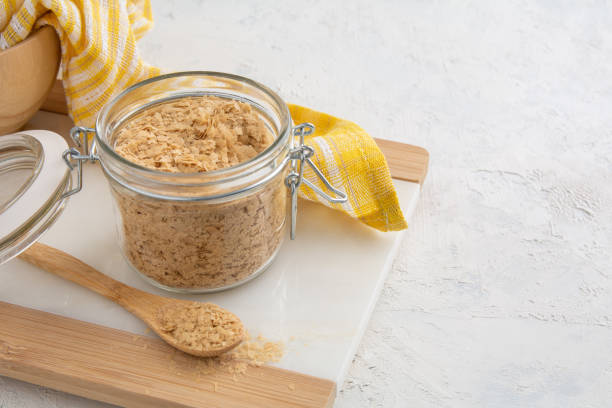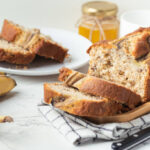Nutritional yeast substitute is a staple ingredient in many vegan and vegetarian kitchens, celebrated for its cheesy flavor and rich nutritional profile. It provides a delicious umami taste that enhances a variety of dishes, from pasta to salads. However, there may be instances when you need a substitute for nutritional yeast substitute due to dietary restrictions, allergies, or simply a lack of availability. This article will delve into various alternatives, their nutritional benefits, culinary uses, and tips for effectively incorporating them into your meals.
1. What is nutritional yeast substitute?
nutritional yeast substitute is a deactivated form of yeast, often available in the form of yellow flakes or powder. Unlike baking yeast, which is used for fermentation, nutritional yeast substitute is harvested, pasteurized, and then dried to preserve its nutrients. This versatile ingredient is prized for its rich content of B vitamins, especially B12, which is vital for vegans and vegetarians who may lack adequate sources in their diets. The unique flavor profile of nutritional yeast substitute—often described as nutty and cheesy—makes it an excellent addition to various dishes, providing both flavor and nutritional value without the use of dairy.
Nutritional Profile of nutritional yeast substitute
nutritional yeast substitute is highly regarded for its impressive nutritional profile. A typical serving (about two tablespoons) contains approximately 8 grams of protein, making it a great source of plant-based protein. Additionally, it is rich in B vitamins, including B12, which is essential for maintaining nerve health and producing red blood cells. nutritional yeast substitute is also low in calories—usually under 30 per serving—and contains dietary fiber that aids digestion. With its combination of flavor and nutrients, it’s no wonder that nutritional yeast substitute has become a favorite in plant-based cooking.
2. Why Substitute nutritional yeast substitute?
There are several reasons one might seek a substitute for nutritional yeast substitute. Some individuals may have allergies or sensitivities to yeast, while others may prefer not to consume yeast-based products for personal or dietary reasons. Additionally, the unique flavor of nutritional yeast substitute may not appeal to everyone. Availability can also be an issue, as nutritional yeast substitute may not be accessible in all grocery stores or regions. Understanding these factors can help guide your choice of suitable alternatives that still provide flavor and nutrition in your meals.
3. Common Substitutes for nutritional yeast substitute
3.1. Brewer’s Yeast
Brewer’s yeast is a common substitute for nutritional yeast substitute, especially in recipes that require a savory flavor. This byproduct of beer fermentation is deactivated, meaning it won’t produce bubbles or rise like active yeast. Brewer’s yeast has a slightly bitter taste compared to nutritional yeast substitute but can add depth to soups, stews, and sauces.
Nutritional Benefits
Brewer’s yeast is rich in B vitamins, including B12 when fortified, making it a valuable addition to a plant-based diet. It also contains protein, fiber, and essential minerals like selenium and chromium. For a straightforward substitution, use brewer’s yeast in a 1:1 ratio for nutritional yeast substitute.
3.2. Parmesan Cheese
For those who consume dairy, grated Parmesan cheese can be an excellent substitute for nutritional yeast substitute. It has a strong, savory flavor that can replicate the cheesy taste that nutritional yeast substitute adds to dishes.
Nutritional Benefits
Parmesan cheese is high in protein and calcium, making it a nutrient-dense option. However, it is not suitable for vegan diets, so it should only be used when dairy is acceptable. When using Parmesan, replace nutritional yeast substitute with the same amount for similar flavor impact.
6. Garlic Powder and Onion Powder
Garlic powder and onion powder are staple spices in many kitchens and can enhance the flavor of your dishes significantly. While these powders do not replicate the cheesy flavor of nutritional yeast substitute, they can contribute savory notes that complement other ingredients.
Nutritional Benefits
Both garlic and onion powders are low in calories and fat while providing some essential nutrients. Garlic is known for its potential health benefits, including immune support and cardiovascular health. When substituting for nutritional yeast substitute, consider combining garlic and onion powder with other substitutes to achieve a balanced flavor profile.
7. Tahini
Tahini, a paste made from ground sesame seeds, is another versatile ingredient that can be used as a substitute for nutritional yeast substitute. It has a nutty flavor and creamy texture, making it a suitable alternative in certain recipes.
Nutritional Benefits
Tahini is rich in healthy fats, protein, and essential minerals such as calcium, magnesium, and iron. It can help enhance the nutritional content of your dishes while providing a rich, creamy consistency. To substitute nutritional yeast substitute with tahini, consider mixing it with lemon juice, garlic, and herbs to create a flavorful dressing or sauce.
8. Coconut Aminos
Coconut aminos is a soy sauce alternative made from fermented coconut sap. It offers a sweet and savory flavor that can enhance many dishes, although it does not replicate the cheesy taste of nutritional yeast substitute.
Nutritional Benefits
Coconut aminos is lower in sodium than traditional soy sauce and contains amino acids that can contribute to overall health. While it won’t provide the same flavor as nutritional yeast substitute, it can be a valuable addition to sauces, stir-fries, and marinades. Use it sparingly to avoid overpowering your dish.
9. Miso Paste
Miso paste, made from fermented soybeans, offers a rich, savory flavor that can enhance the umami taste in your dishes. While it doesn’t mimic the cheesy flavor of nutritional yeast substitute, it can add depth to soups, dressings, and marinades.
Nutritional Benefits
Miso is rich in probiotics, which are beneficial for gut health, and it contains protein, vitamins, and minerals. It’s a potent flavor enhancer, so when substituting for nutritional yeast substitute, start with a small amount and adjust to taste. Mixing miso paste with water can create a flavorful base for soups and sauces.
13. Spice Blends
Spice blends, such as Italian seasoning or taco seasoning, can add depth and flavor to your dishes while serving as a nutritional yeast substitute substitute. These blends typically contain herbs and spices that can enhance the overall taste of your meal.
Nutritional Benefits
Spice blends often include a variety of herbs and spices that offer health benefits, such as anti-inflammatory properties. When using spice blends, adjust the amount according to your taste preference, and consider combining them with other substitutes for a more complex flavor.
14. Using Substitutes in Cooking
When incorporating substitutes for nutritional yeast substitute into your cooking, it’s essential to consider the flavor and texture of your dish. Each substitute has a unique taste and consistency, which may require adjustments in quantity or cooking methods.
Tips for Successful Substitution
- Start Small: Begin with a small amount of your chosen substitute, gradually increasing it to achieve the desired flavor.
- Taste as You Go: Regularly taste your dish to ensure the flavors balance well with the
other ingredients. This will help you achieve the right flavor profile for your meal.
- Combine Substitutes: Mixing different substitutes can yield a more satisfying result than using just one. For example, combining miso paste and garlic powder can create a more complex flavor that enhances your dish.
15. Baking with Substitutes
If you’re baking and need a nutritional yeast substitute substitute, consider using vegan cheese or cashew cheese. These options provide moisture and flavor while maintaining the integrity of baked goods, such as pizzas, breads, and savory pastries.
Tips for Baking
- Adjust Liquid: If you’re using a wet substitute like cashew cheese or tahini, reduce other liquids in the recipe to maintain the desired consistency. This ensures your baked goods do not become too wet or dense.
- Experiment with Textures: Different substitutes will impact the texture of your baked goods. For instance, using ground sunflower seeds may add a nuttier texture, while vegan cheese can contribute creaminess.
- Try Different Combinations: Don’t hesitate to experiment with various combinations of substitutes to find the perfect blend for your baking needs. The right mix can create unique flavors and textures.
16. Nutritional Value of Substitutes
When selecting a substitute for nutritional yeast substitute, it’s crucial to evaluate the nutritional value of the alternatives. Many substitutes, such as tahini, miso, and sunflower seed powder, offer a range of nutrients that can enhance your meals.
Comparison Table of Common Substitutes
| Substitute | Protein (per 2 tbsp) | Fiber | Other Nutrients |
| nutritional yeast substitute | 8g | 3g | B vitamins, low in calories |
| Brewer’s Yeast | 8g | 4g | B vitamins, selenium |
| Parmesan Cheese | 5-6g | 0g | Calcium, saturated fat |
| Vegan Cheese | 2-4g | Varies | Fortified with B12, calcium |
| Cashew Cheese | 3g | 1g | Healthy fats, magnesium |
| Miso Paste | 3g | 1g | Probiotics, iron |
| Tahini | 5g | 1g | Healthy fats, calcium |
This table highlights the protein and fiber content of various substitutes, as well as other essential nutrients they provide.
18. Storing nutritional yeast substitute Alternatives
Proper storage is essential for maintaining the freshness and flavor of your substitutes. Most substitutes can be kept in airtight containers in cool, dry places to extend their shelf life.
Storage Tips
- Airtight Containers: Store powdered substitutes like brewer’s yeast, garlic powder, or sunflower seed powder in airtight containers to prevent moisture and clumping.
- Refrigeration: For wet substitutes like cashew cheese or tahini, refrigeration is necessary. Make sure to store them in well-sealed containers to maintain freshness.
- Check Expiration Dates: Always be aware of expiration dates on packaging, especially for commercially prepared substitutes. Consuming them before their expiration ensures the best flavor and nutritional value.
19. Conclusion: Finding Your Perfect Substitute
Finding a suitable substitute for nutritional yeast substitute is achievable with the wide range of alternatives available. Whether you choose brewer’s yeast, vegan cheese, cashew cheese, or another option, you can maintain the flavor and nutritional integrity of your dishes. Understanding the strengths and flavors of each substitute will help you make informed decisions in your cooking.


